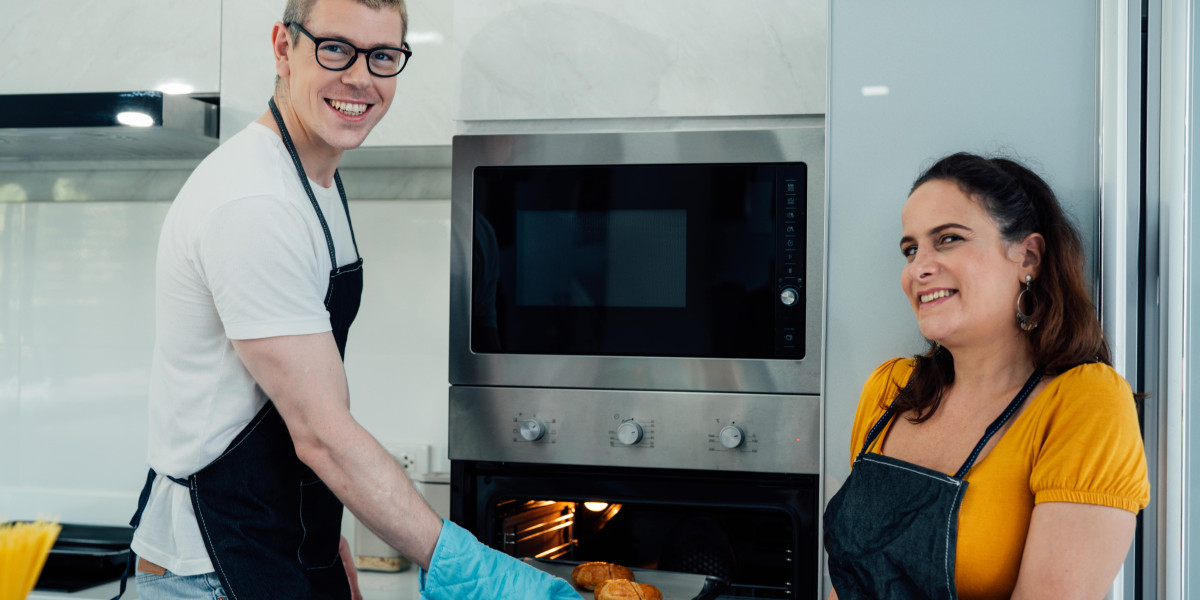The Rise of Electric Integrated Ovens and Hobs: A Comprehensive Guide
Worldwide of modern-day kitchens, electric integrated ovens and hobs have actually become necessary appliances, offering effectiveness, style, and benefit. As culinary practices develop, so too do the innovations that make cooking easier and more pleasurable. This post looks into the functions, advantages, setup considerations, and maintenance ideas for electric integrated ovens and hobs, while resolving typical regularly asked questions.

What is an Electric Integrated Oven and Hob?
An electric integrated oven and hob is a mix cooking device that flawlessly suits kitchen cabinetry. Developed to enhance space and visual appeal, these appliances offer the dual functionality of an oven and a hob (cooktop) without jeopardizing on efficiency.
Key Features of Electric Integrated Ovens and Hobs
- Space-Saving Design: These appliances are built to fit nicely into kitchen systems, optimizing offered space.
- Touch Control Panels: Many models include touch-sensitive controls for easy operation and streamlined look.
- Advanced Cooking Functions: Options like convection baking, grilling, and steaming cater to various cooking styles.
- Energy Efficiency: Electric integrated ovens normally supply better thermal performance compared to standard gas designs.
- Safety Features: Child locks, automatic shut-off, and heat indications boost security during cooking.
Advantages of Electric Integrated Ovens and Hobs
The adoption of electric integrated ovens and hobs in homes comes with many benefits that appeal to a vast array of cooking lovers, from newbie cooks to expert chefs. Here are some of the most substantial benefits:
1. Performance and Consistency
- Uniform Cooking: Electric ovens and hobs provide constant heat distribution, resulting in equally cooked food.
- Reduced Cooking Times: Advanced innovations, such as induction heating, can substantially reduce cooking times.
2. Easy to Clean
- Smooth Surfaces: The smooth surfaces of integrated styles get rid of food traps, making them simple to clean down.
- Self-Cleaning Options: Many modern ovens come with self-cleaning functions that streamline upkeep.
3. Looks
- Modern Look: An integrated style provides a unified look in the kitchen, making the space appear more modern-day and curated.
4. Adaptability
- Multi-Functionality: Cooking alternatives range from baking and grilling to frying and simmering, dealing with diverse cooking requirements.
- Time-Saving: Can prepare numerous meals concurrently, enhancing meal preparation.
5. Cost-Effectiveness
- Lower Energy Bills: Electric appliances are generally more efficient, causing prospective cost savings on energy expenses with time.
Setup Considerations
Incorporating electric ovens and hobs into your kitchen requires correct planning and consideration. Here are some necessary elements to remember:
- Space Measurement: Ensure that the measurements of the home appliance line up with the designated setup space.
- Electrical Requirements: Check for sufficient electrical supply, including voltage and amperage to support the home appliance.
- Ventilation Needs: While electric appliances do not require gas ventilation, adequate area for air flow is still essential.
- Cabinet Compatibility: Ensure cabinets can support the combined weight of the oven and hob.
- Professional Installation: Engaging with a certified specialist is suggested for safe and compliant setup.
Upkeep Tips for Electric Integrated Ovens and Hobs
Preserving an electric integrated oven and hob ensures durability and optimal efficiency. Here are some maintenance practices:
- Regular Cleaning: Wipe down surface areas routinely and make sure spillages are cleaned as soon as possible.
- Check Seals: Ensure that door seals are intact to avoid heat loss, which can impact cooking efficiency.
- Self-Cleaning Cycle: Utilize the self-cleaning function if offered, at least once every few months.
- Inspect Wiring and Cords: Check for harmed cables or connections to avoid electrical dangers.
- Arrange Professional Servicing: Regularly scheduled service can identify concerns before they end up being significant problems.
Often Asked Questions (FAQs)
1. Are electric ovens much better than gas ovens?
Electric ovens provide more consistent heat and frequently have functions like convection cooking, which can improve the cooking experience. Many users find them much easier to clean up and much safer than gas ovens.
2. What is the difference between induction and ceramic hobs?
Induction hobs utilize magnetic fields to heat pots and pans straight, while ceramic hobs utilize electric coils underneath a glass surface area to warm the cooking surface. Induction hobs are typically more energy-efficient and faster than ceramic options.
3. Can I set up an electric oven and hob myself?
While it is possible for skilled DIY enthusiasts to install their appliances, professional setup is recommended to ensure compliance with security standards and local policies.
4. How do I know if my oven is carrying out efficiently?
Screen cooking times and temperature level settings. If food is consistently undercooked or overcooked, it may indicate that the oven needs recalibration or maintenance.
5. How can I improve the life expectancy of my electric oven and hob?
Regular cleansing, appropriate usage, and periodic professional upkeep can substantially extend the lifespan of these appliances. Avoiding quick temperature level modifications can also assist in keeping their integrity.

Electric integrated ovens and hobs represent the advancement of cooking appliances, weding performance with modern style. Their efficiency, ease of usage, and visual appeal make them an exceptional option for modern kitchens. As cooking innovation continues to advance, both home cooks and culinary experts can anticipate even higher developments in the world of electric integrated cooking options.
With the right maintenance and installation practices, these appliances can improve both the cooking experience and the overall functionality of the kitchen space.



